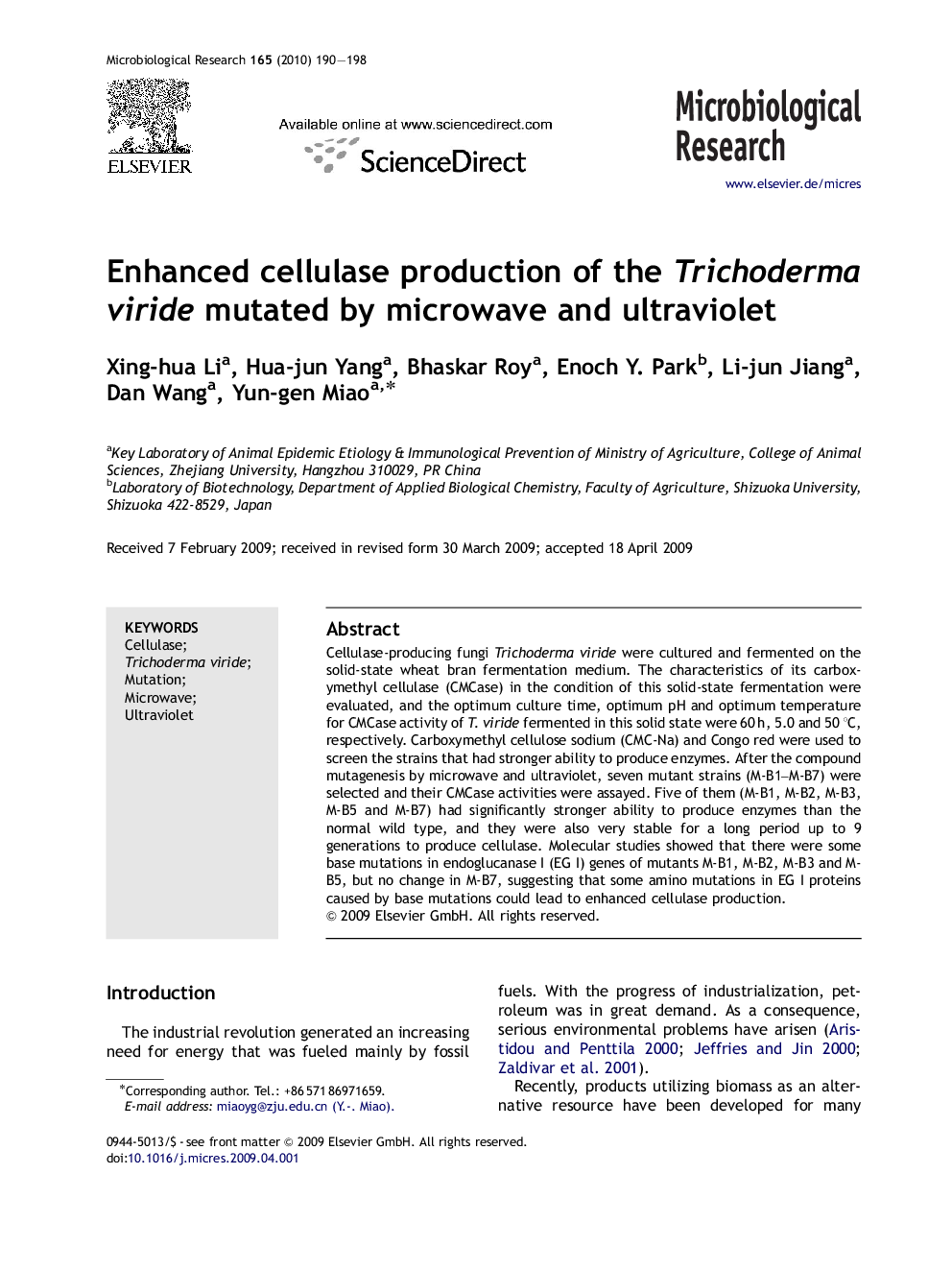| Article ID | Journal | Published Year | Pages | File Type |
|---|---|---|---|---|
| 2092845 | Microbiological Research | 2010 | 9 Pages |
Cellulase-producing fungi Trichoderma viride were cultured and fermented on the solid-state wheat bran fermentation medium. The characteristics of its carboxymethyl cellulase (CMCase) in the condition of this solid-state fermentation were evaluated, and the optimum culture time, optimum pH and optimum temperature for CMCase activity of T. viride fermented in this solid state were 60 h, 5.0 and 50 °C, respectively. Carboxymethyl cellulose sodium (CMC-Na) and Congo red were used to screen the strains that had stronger ability to produce enzymes. After the compound mutagenesis by microwave and ultraviolet, seven mutant strains (M-B1–M-B7) were selected and their CMCase activities were assayed. Five of them (M-B1, M-B2, M-B3, M-B5 and M-B7) had significantly stronger ability to produce enzymes than the normal wild type, and they were also very stable for a long period up to 9 generations to produce cellulase. Molecular studies showed that there were some base mutations in endoglucanase I (EG I) genes of mutants M-B1, M-B2, M-B3 and M-B5, but no change in M-B7, suggesting that some amino mutations in EG I proteins caused by base mutations could lead to enhanced cellulase production.
